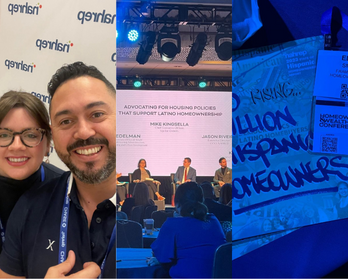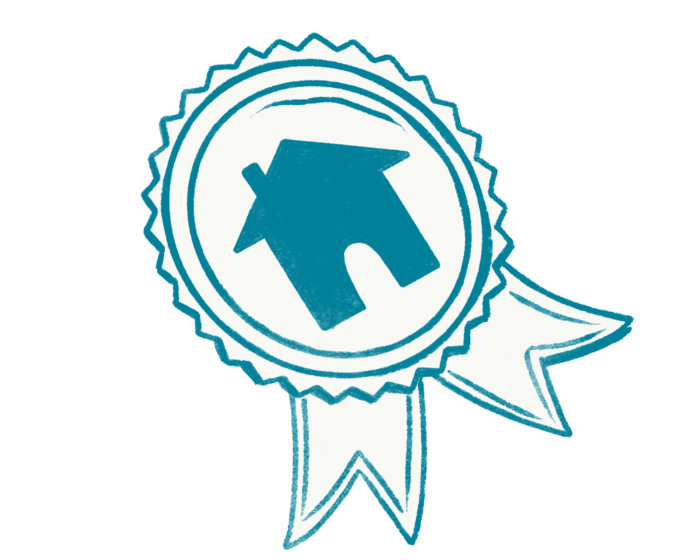Sometimes you have to slow down and step back to move forward …
Across many disciplines, professionals who design consumer-facing products often follow a standard process for design research, using interviews, surveys, and usability testing among potential users to validate demand for a product.
To align with our mission at Framework® Homeownership, we decided to slow down and examine our product research process, and that moment of reflection led to some exciting revelations for us as an organization.
We discovered that critical thinking about equity and inclusivity is often left out of the research process. We wanted to change that.
A catalyst for change
As part of our Call to Action to confront racial injustice, we chose to start by being more analytical about our research and design practices. We set a goal to make our research practices equitable, by making sure that commonly underrepresented voices are elevated, and inclusive, making it easy for anyone to participate. We adopted and explored our improved practices in our summer 2020 research efforts.
(Psst … speaking of racial injustice, check out our series on discrimination in homebuying and homeownership.)
Early learnings
For example, as a brand, the Keep Home app is intentionally mobile-first so users won’t need desktop computers to access our products. To mirror this logic, we held testing sessions through Zoom, the web conferencing platform that can be used on mobile devices as well as computers. We “hosted” the Zoom calls, making them free of charge for participants, and allowed participants to share their screens to walk us through their experience with the Keep app. We also offered tech support for anyone in need.
In the end, we found that more than half of our research participants use Keep products through mobile devices and preferred to participate in research sessions through mobile devices.
But increasing the methods in which customers could participate in our research studies wasn’t the only major shift in our approach to research — in fact, this is just the beginning of the changes we plan to make.
Expanding our approach
To approach our research with as much thoughtful consideration as possible, we opted for third-party guidance and expertise. We strategized with the talented team at Super Deep Studio, a research firm with a mission to bring people together, along with Nelda Reyes of AB Cultural Drivers, an expert in equitable research.
Specifically, we focused on four key areas of our research process:
1. Participant recruiting
In our methods to recruit research participants, we enlisted the help of a more inclusive recruiting screener (a short conversation or survey that includes preliminary questions to help identify the right participants for a research study). We then eliminated a question about educational background. Historically, education is used in the research and design industry to determine how articulate research participants will be about their experiences, but we disagree with that assumption.
2. Approach to sensitive topics
With equity, empathy, and humility in mind, before our research sessions, we asked our participants how comfortable they were discussing their homeownership journey. We gave them an opportunity to identify topics they’d rather avoid, like specifics about their finances or personal lifestyle. When the sessions began, we provided another opportunity for them to share their comfort levels, allowing us to foster a caring space.
3. Relationship with participants
Throughout the process, we questioned what our relationship should be with our research study participants. For one, we noticed that it’s a challenge to be completely unbiased when listening to and analyzing their experiences. While taking and analyzing notes, we found that it’s easy to get attached to things that relate most to us, causing us to forget exactly what was said or what the real intention or feeling might have been.
This time, we went back to our recordings of the sessions over and over again to avoid assuming that what we wrote down was correct, and to instead really hear what it is that participants said. They are, after all, the experts in their experiences. This practice not only stopped us from missing and misinterpreting things, but it also allowed us to identify patterns in how different factors in people’s lives might impact how they use a product.
Additionally, we opted to change the power structure in our research sessions. We realized that our studies should be just as beneficial for our participants as they are for us, so we prioritized time for participants to ask us any questions they had regarding homebuying and homeownership. As a result, we were given additional opportunities to interact with our participants.
4. Approach to ideating
After the research sessions were completed, we intentionally shifted the way we approached the synthesis process (the process of combining notes after a research session). We prioritized getting to know who we met before we analyzed what they said. While this method takes more time, we’ve found it to be incredibly valuable in allowing us to better practice empathy and ensure that we embed our users’ experiences in each and every step of the design process.
Our call to action
At Framework, we chose to take on the challenge to be analytical about our research and design practices and to answer the call to take action on actualizing equity and inclusivity.
As a result, our research proved to be just as valuable for participants as it was for us, as they expressed excitement that Framework will be here to provide support and counseling while they travel through their homeownership journey.
For more information on equity and inclusivity, check out these posts:
- How to spot steering in real estate (and what you can do about it).
- “Are you married?” And other questions your real estate agent cannot ask you.




